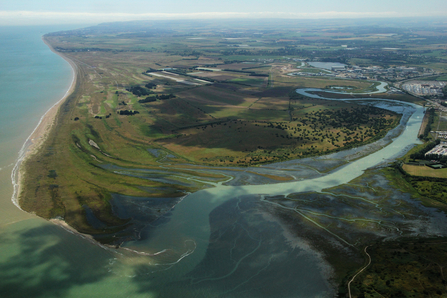In fact, over half of UK species have declined since 1970 - and habitat fragmentation is a huge contributing factor. But what does this eco buzzword actually mean? Why does it matter? Let’s take a look.
What is habitat fragmentation?
Habitat fragmentation occurs when larger, connected areas of habitat are segmented and dispersed into smaller, isolated areas due to human development, infrastructure, and natural processes.
Primarily, it’s caused by urbanisation, agricultural expansion, deforestation, and the development of infrastructure. Sometimes, though, shifts can be more indirectly caused by climate change and the sea level rise, droughts, flooding, and forest fires this can bring.
© Gillian Day
The effects of habitat fragmentation
The effects of habitat fragmentation are many – and often devastating.
It can cause disruption to the natural migration patterns of many species of birds and butterfly, for example. And, because of the lack of connectivity between areas, it can lead to a loss of genetic diversity within animal populations.
By extension, extinction risks increase for species with limited ability to travel.
As species populations decrease or become extinct, there are often drastic shifts in predator-prey dynamics and fragmented populations become more vulnerable to invasive species.
All in all, the more land is fragmented, the less resilient species and landscapes become.
On climate
It may go without saying, but fragmented habitats mean fewer habitats – and fewer wild habitats means fewer carbon sequestration zones. These small patches store less carbon than, say, intact ancient forests or bogs. An indirect result of this, then, is an increase in atmospheric carbon dioxide.
As well as this, it’s often underestimated just how much ecosystems do for us. You might have heard of the term ‘ecosystem services’; this refers to the fact that intact, healthy habitats provide natural water filtration, flood control, and pollination. All of these are compromised by increasingly separate habitats.

The edge effect
On an undisturbed planet, various types of habitat inevitably meet at various points. A woodland, for example, sits next to a grassland – but there isn’t a defined, sharp edge where one ends and one begins. That space in between is known as the ‘edge’, or the eco-tone, where you find some species from the woodland, some from the grassland, and some ‘edge’ species that thrive in between.
In larger, less pressured habitats, the eco-tone is often a thriving place with a great variety of natural structures. They are crucial for edge species that require multiple environments for foraging and nesting.
As habitats become smaller, edges grow narrower, and the biodiversity of the ecotone – and the two distinct habitats either side – decreases.
You can read more about edge effects in this blog from Tree Hugger.
How do we achieve habitat connectivity?
For one, sustainable land–use planning is key to maintaining and creating connected habitats and a more climate–resilient environment.
At the very least, wildlife corridors can serve as crucial pathways between fragmented landscapes, giving species the ability to move more freely. You might have seen, for example, eco-bridges built over motorways to join up once-connected habitats. They drastically reduce the amount of roadkill, while also promoting gene flow and renewed genetic diversity – essential for a healthy ecosystem, as we touched on earlier.
‘Wildlife corridors’ as you’ve heard of them are often physically large, but small ones can still make a huge difference. For example, hedgerows in gardens, on farms, and in urban spaces provide nesting habitats and homes for birds, hedgehogs, lizards, and more.
Conservation efforts, too, play a vital role in enabling habitat connectivity. Land acquisition and restoration projects like our Wilder Blean Initiative and the Protect Polhill appeal aim to facilitate more contiguous habitats, re-establishing lost connections.
Policy initiatives are also critical for achieving more connected habitats; for example, the establishment of protected areas (or more legal backing for designated sites like SSSIs). Hedges, crucial as they are, have recently come under threat by the roll-back of laws that once protected them – you can read more about cross compliance law in our news post here.
To a more connected future
A more connected future is possible if we work together. By spreading the word about the impacts of habitat fragmentation and the importance of wildlife corridors and conservation, you can contribute to a healthier, happier planet with more resilient ecosystems!
Check out our 65 green actions you can take for nature, many of which involve tips that promote more connected habitats.

